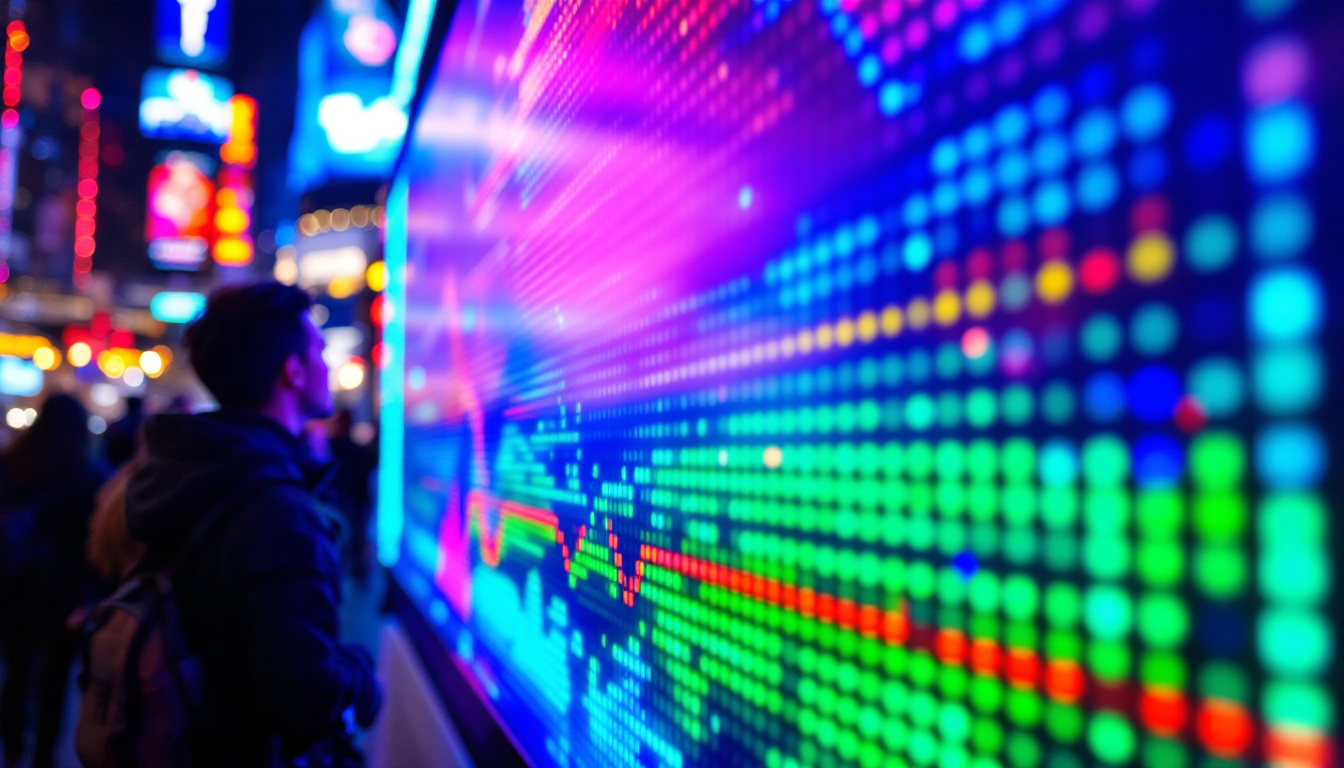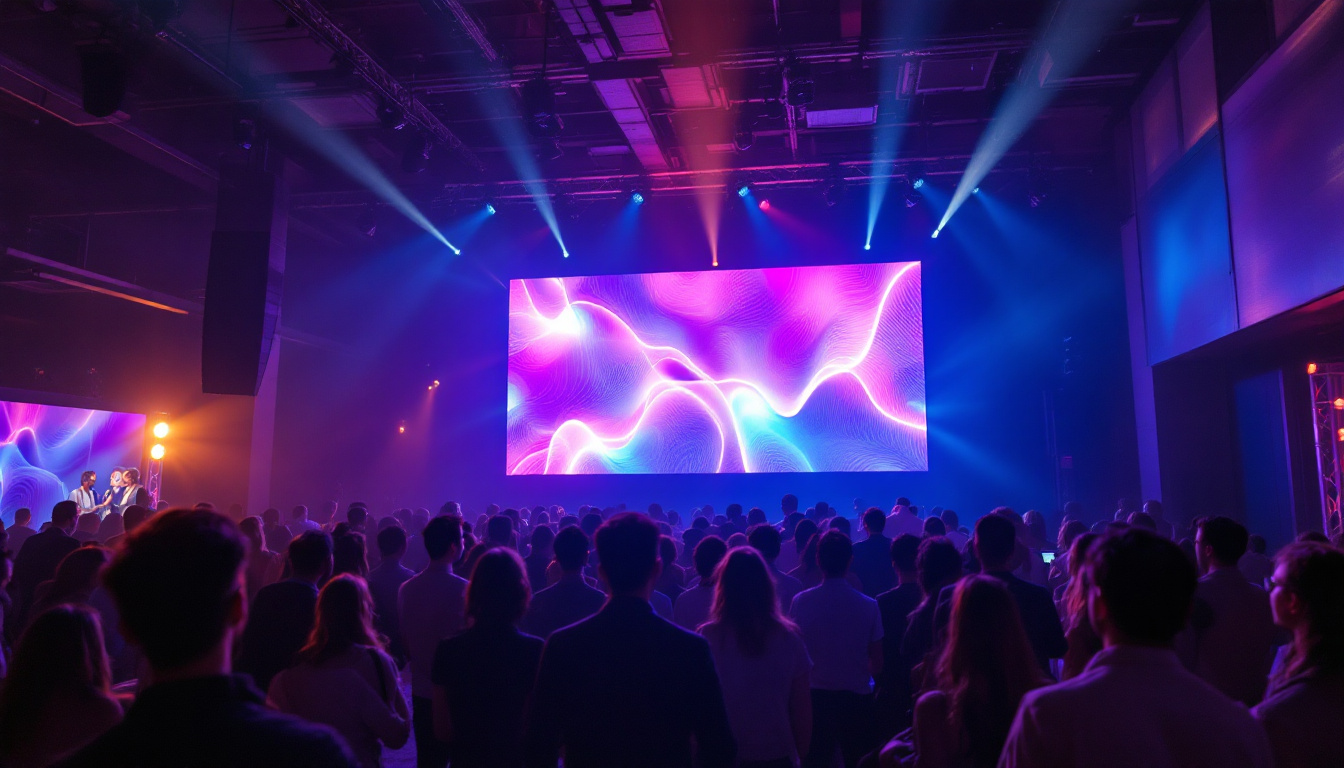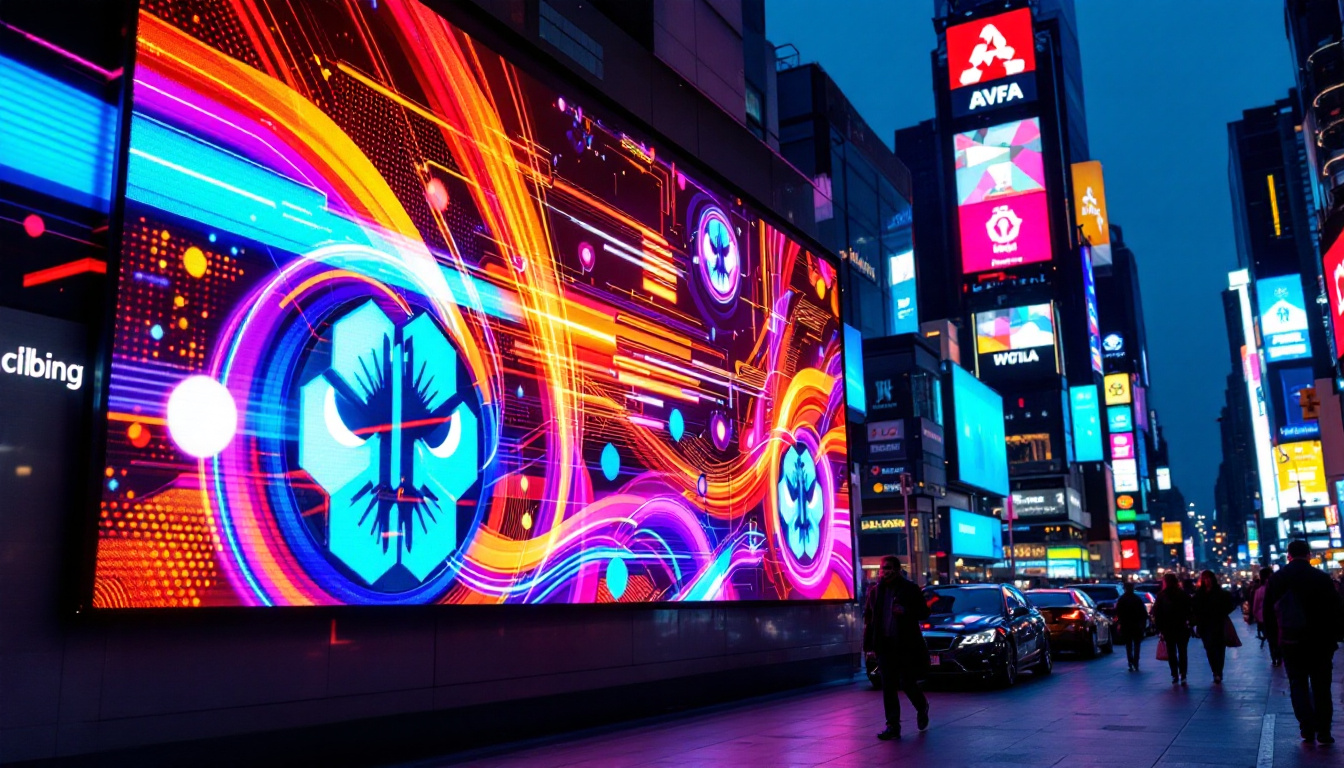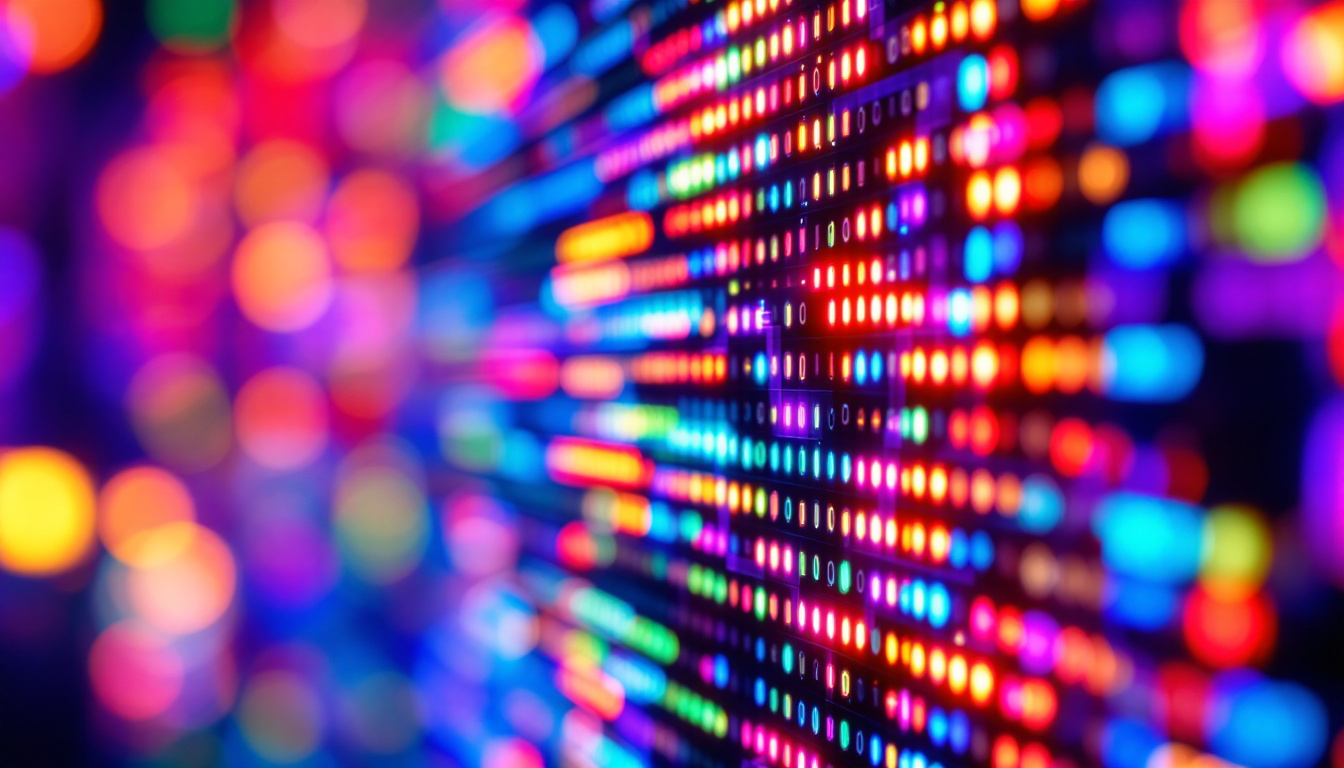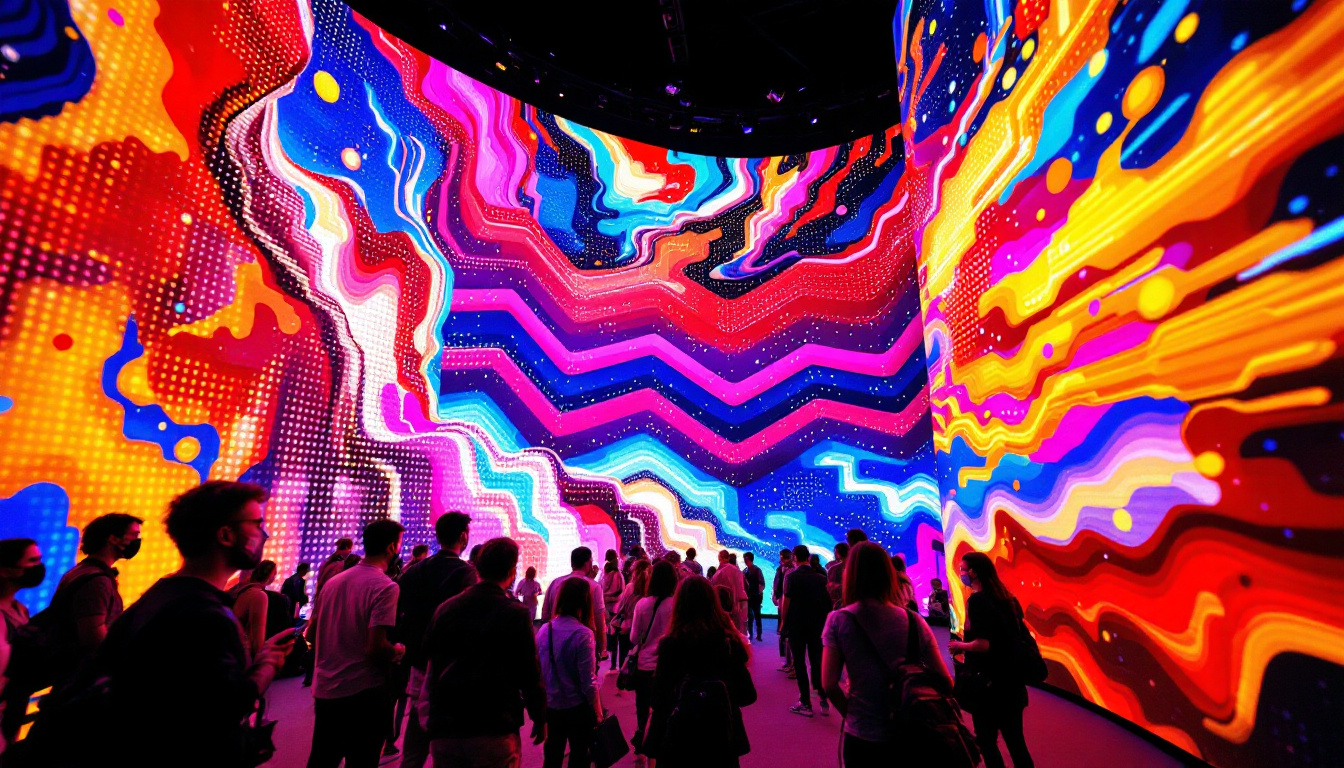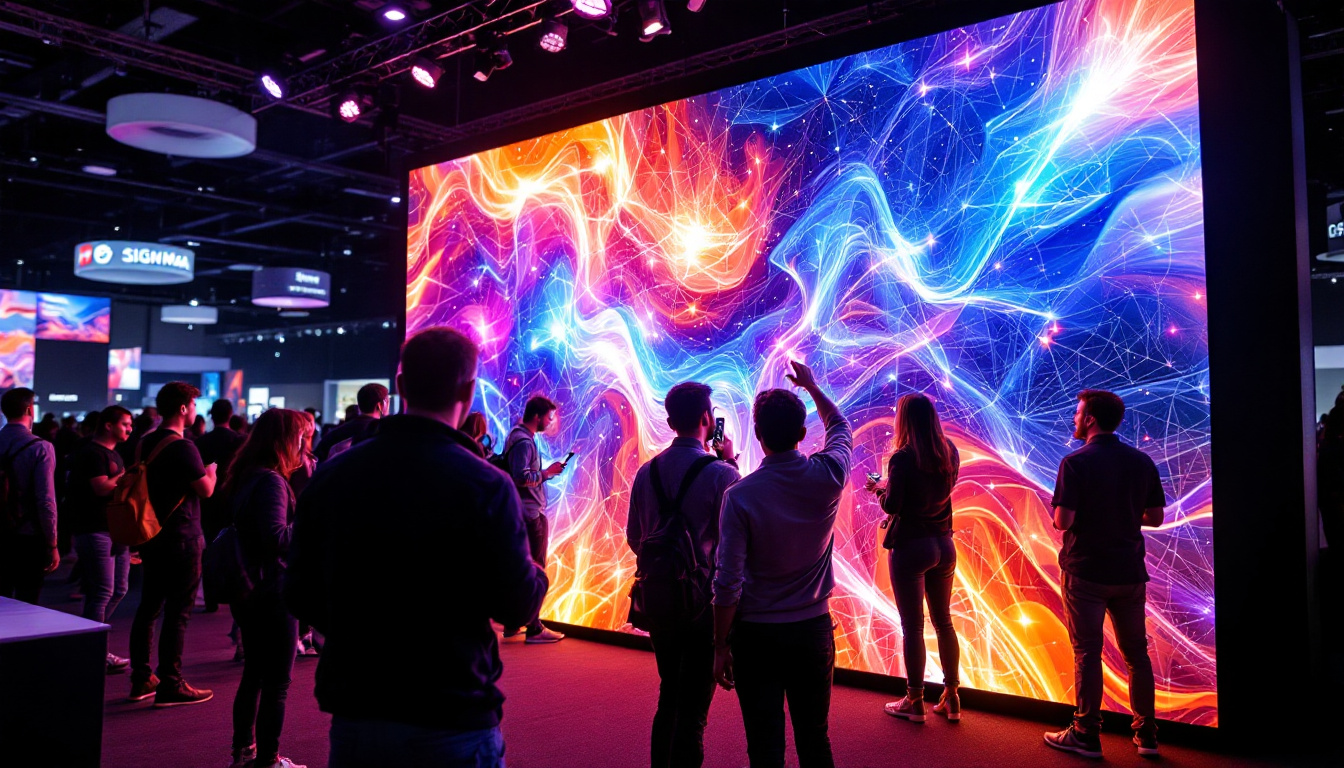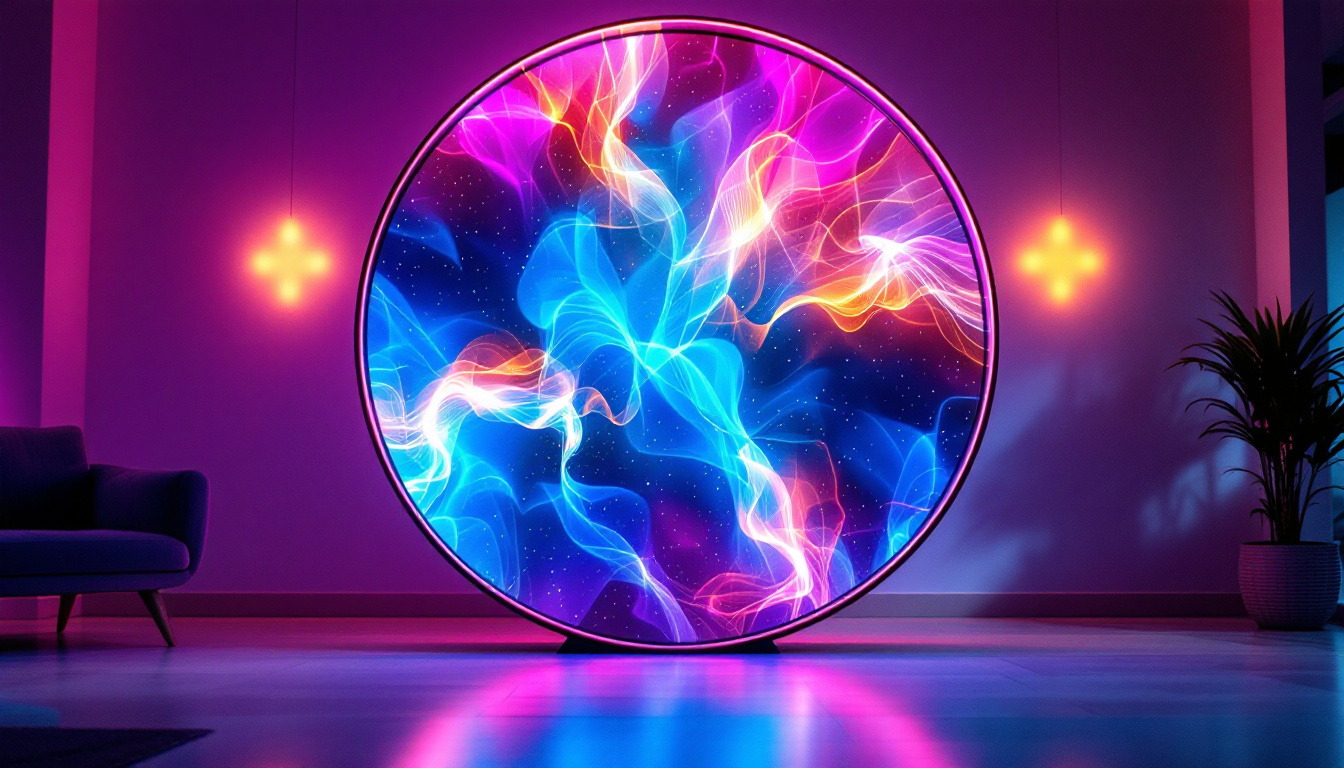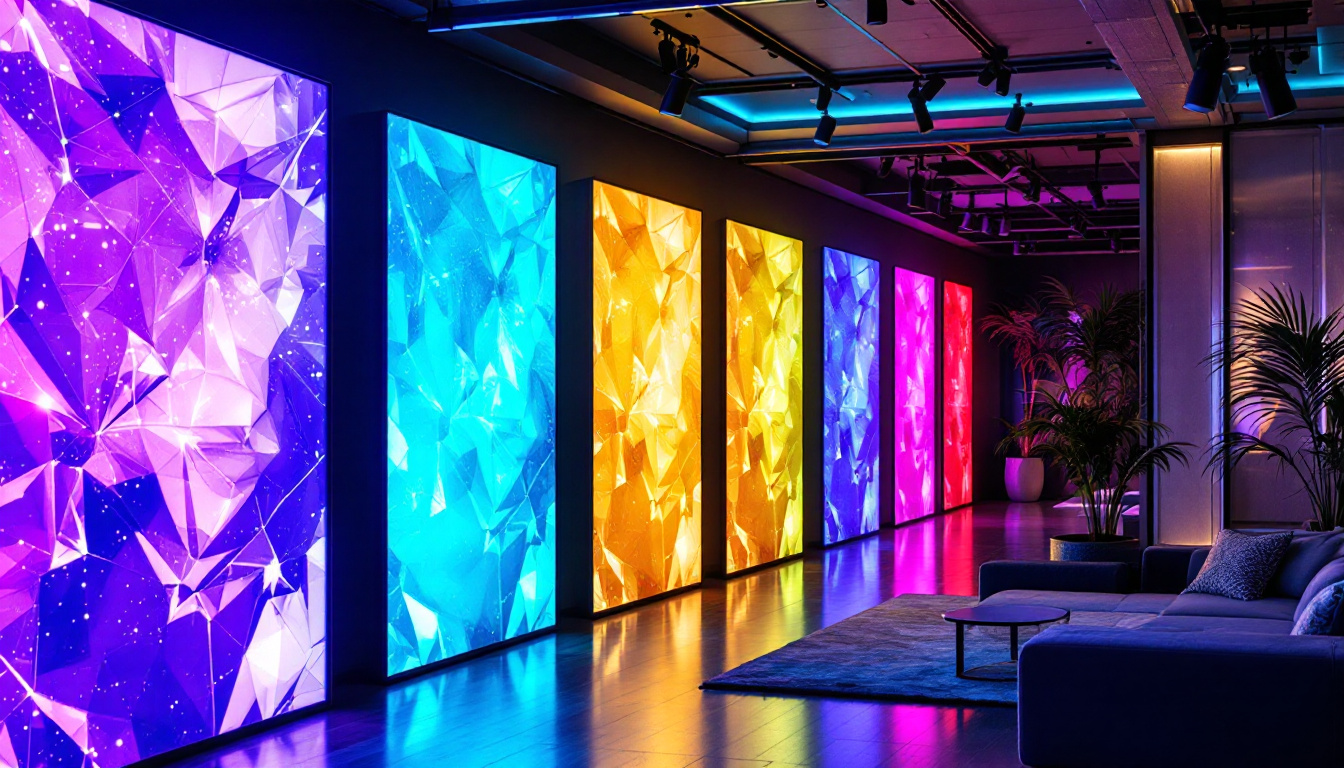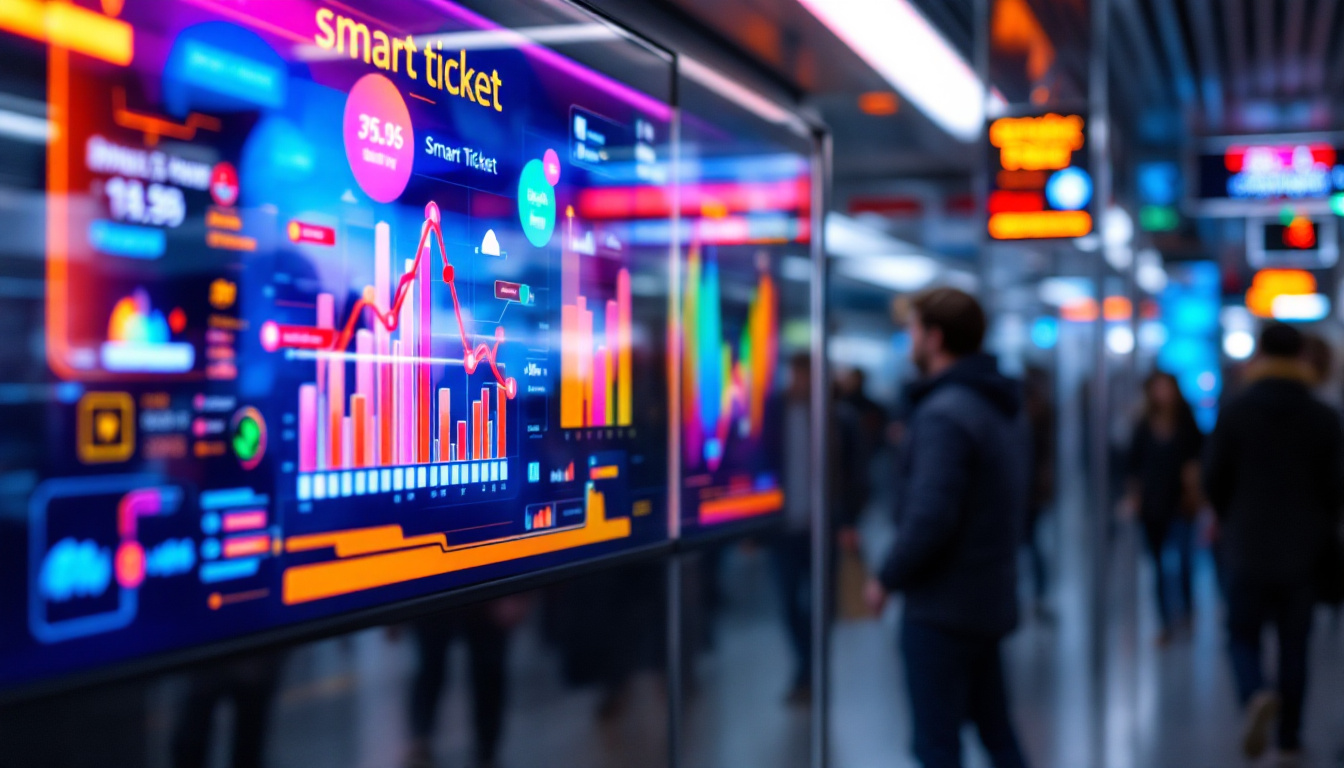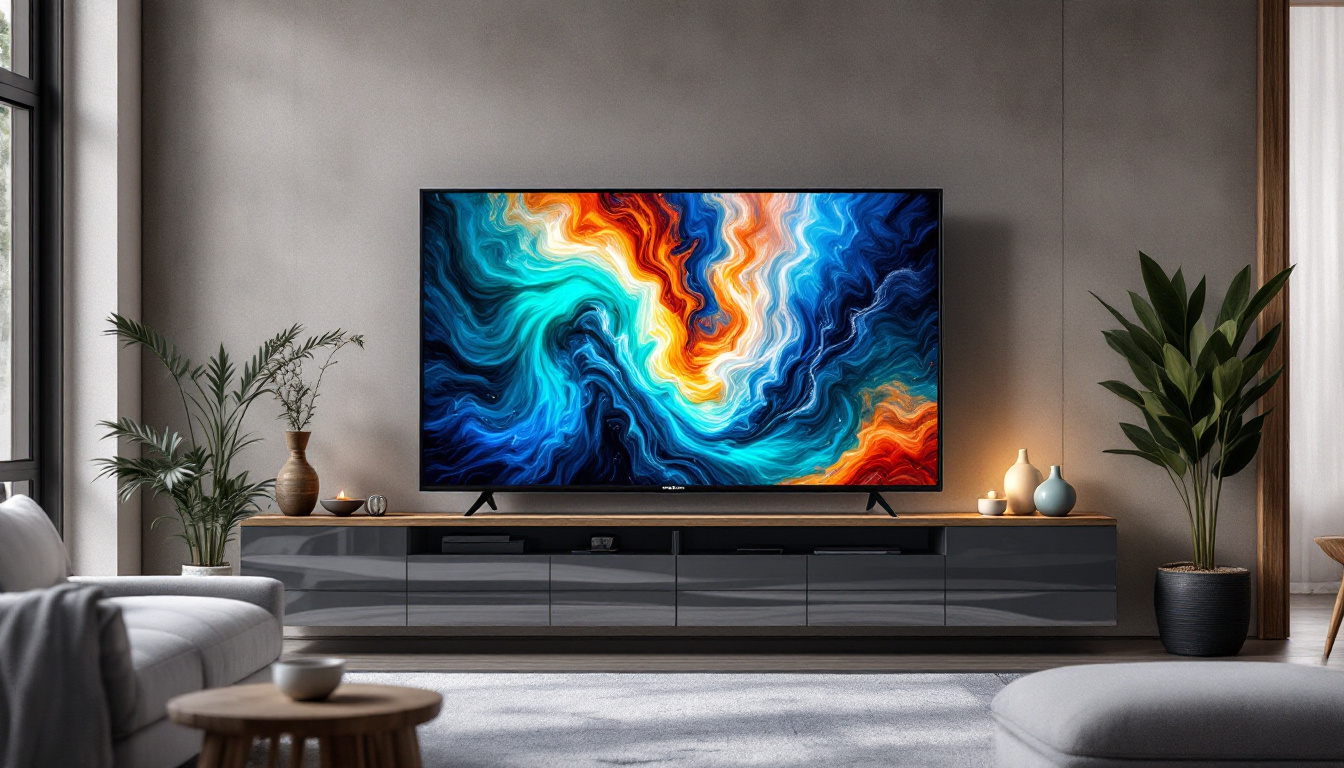In today’s digital age, large-format displays have become essential tools across various industries—from corporate environments and control rooms to entertainment venues and retail spaces. Among these, a 55-inch monitor with LED display technology stands out as a versatile and powerful option that balances size, clarity, and performance. This article delves into the details of 55-inch LED monitors, exploring their technology, benefits, applications, and what to consider when choosing one.
Understanding LED Display Technology
What is an LED Display?
LED, or Light Emitting Diode, displays are a type of flat-panel display technology that uses light-emitting diodes as pixels to produce images. Unlike traditional LCD screens that rely on fluorescent backlighting, LED displays use LEDs to illuminate the screen, offering better brightness, contrast, and energy efficiency. This advancement in display technology has revolutionized how we experience visual media, providing sharper images and vibrant colors that enhance everything from gaming to professional presentations.
There are two main types of LED displays: edge-lit and direct-lit. Edge-lit LED displays place LEDs along the edges of the screen, using light guides to distribute illumination evenly. Direct-lit LED displays, on the other hand, position LEDs directly behind the screen, allowing for more uniform lighting and better control over brightness and contrast. Additionally, some modern LED displays incorporate local dimming technology, which can selectively dim or brighten different areas of the screen to improve overall picture quality, especially in scenes with high dynamic range.
How LED Displays Differ from Other Technologies
Compared to older LCD monitors that use CCFL (cold cathode fluorescent lamp) backlighting, LED displays offer superior color accuracy and consume less power. Moreover, when compared to OLED (Organic LED) displays, LED monitors tend to be more affordable and have longer lifespans, though OLEDs provide better black levels and viewing angles. This makes LED displays particularly appealing for users who prioritize cost-effectiveness without sacrificing too much on visual performance. Furthermore, LED technology is continually evolving, with advancements such as Mini-LED and Micro-LED, which promise even greater improvements in brightness and color fidelity.
For a 55-inch monitor, LED technology strikes a balance between cost, performance, and durability, making it a popular choice for both professional and consumer applications. In commercial settings, such as retail and advertising, LED displays are often used for digital signage due to their ability to attract attention with bright, vivid images. Additionally, the lightweight and slim profile of LED screens make them easier to install and integrate into various environments, from conference rooms to home theaters, enhancing the overall viewing experience. As the demand for high-quality visual displays continues to grow, LED technology remains at the forefront, adapting to meet the needs of diverse applications and audiences.
The Advantages of a 55-Inch LED Monitor
Optimal Screen Size for Versatility
A 55-inch display is considered a large monitor, providing ample screen real estate for multitasking, detailed visuals, and immersive viewing experiences. This size is particularly advantageous in environments where multiple users need to view the screen simultaneously, such as conference rooms, digital signage, or control centers.
Its dimensions allow for clear visibility even from a distance, making it suitable for presentations, video conferencing, and collaborative work. Additionally, 55-inch monitors fit comfortably in many office and home settings without overwhelming the space.
High Resolution and Image Quality
Most 55-inch LED monitors support high-definition resolutions, commonly 4K UHD (3840 x 2160 pixels). This high pixel density ensures sharp images, crisp text, and vibrant colors, which are crucial for tasks like graphic design, video editing, and detailed data analysis.
LED technology enhances contrast ratios and brightness levels, delivering vivid images even in brightly lit environments. This makes 55-inch LED monitors ideal for use in spaces with variable lighting conditions.
Energy Efficiency and Longevity
LED displays are known for their energy efficiency. They consume significantly less power compared to older LCD models with fluorescent backlighting. This translates into lower operating costs and a reduced environmental footprint, an important consideration for businesses aiming to improve sustainability.
In addition to energy savings, LED monitors typically have longer lifespans, often exceeding 50,000 hours of use. This durability reduces the frequency of replacements and maintenance, providing better long-term value.
Applications of 55-Inch LED Monitors
Corporate and Professional Use
In the corporate world, 55-inch LED monitors are widely used for presentations, video conferencing, and collaborative workspaces. Their size and resolution make them ideal for displaying detailed spreadsheets, charts, and multimedia content, enhancing communication and productivity.
Many companies incorporate these monitors into meeting rooms and huddle spaces to facilitate seamless information sharing. The ability to connect multiple devices via HDMI, DisplayPort, or USB-C ports adds to their versatility.
Digital Signage and Advertising
Retailers and advertisers leverage 55-inch LED displays for digital signage due to their vibrant colors and high brightness. These monitors can attract customer attention with dynamic content, promotions, and interactive interfaces.
In public spaces such as airports, malls, and transportation hubs, 55-inch LED monitors serve as effective tools for wayfinding, announcements, and advertising, thanks to their visibility and reliability.
Entertainment and Media Production
For media professionals, 55-inch LED monitors provide the screen size and color accuracy necessary for video editing, color grading, and content creation. The large display area supports detailed timelines and multiple windows, streamlining workflows.
Additionally, these monitors are popular in home theaters and gaming setups, delivering immersive experiences with high resolution and fast refresh rates.
Key Features to Consider When Choosing a 55-Inch LED Monitor
Resolution and Refresh Rate
Resolution is a critical factor when selecting a 55-inch monitor. A 4K UHD resolution is recommended for most professional and entertainment uses, offering four times the pixels of Full HD and ensuring crisp visuals.
The refresh rate, measured in hertz (Hz), determines how smoothly motion is displayed. For general office use, 60Hz is sufficient, but for gaming or video production, higher refresh rates such as 120Hz or 144Hz provide smoother motion and reduced blur.
Connectivity Options
Modern 55-inch LED monitors come equipped with multiple input options, including HDMI, DisplayPort, USB-C, and sometimes legacy ports like VGA. USB-C ports are particularly valuable for their ability to transmit video, audio, and data simultaneously, as well as provide power delivery to connected devices.
When choosing a monitor, consider the devices you plan to connect and ensure compatibility with your existing hardware to avoid the need for adapters or converters.
Color Accuracy and Calibration
For professionals in graphic design, photography, and video editing, color accuracy is paramount. Look for monitors that cover a wide color gamut such as Adobe RGB or DCI-P3 and offer factory calibration or support for hardware calibration tools.
Features like HDR (High Dynamic Range) support can further enhance color depth and contrast, providing a more lifelike viewing experience.
Ergonomics and Design
While a 55-inch monitor is relatively large, ergonomic features such as adjustable stands, VESA mount compatibility, and thin bezels can improve usability and integration into various environments.
Consider the monitor’s weight and dimensions to ensure it fits your workspace. Additionally, anti-glare coatings and blue light filters can reduce eye strain during extended use.
Maintaining and Optimizing Your 55-Inch LED Monitor
Proper Placement and Lighting
To maximize the performance of a 55-inch LED monitor, place it in a location where ambient light does not cause glare or reflections. Position the screen at eye level and maintain a comfortable viewing distance, typically between 3 to 5 feet, depending on the resolution and use case.
Regular Calibration and Software Updates
Maintaining color accuracy and image quality requires periodic calibration using hardware tools or built-in software utilities. Calibration ensures that colors remain consistent over time, which is especially important for creative professionals.
Additionally, keep the monitor’s firmware updated to benefit from performance improvements and new features provided by the manufacturer.
Cleaning and Care
Clean the screen regularly with a microfiber cloth and appropriate cleaning solutions designed for LED displays. Avoid harsh chemicals or abrasive materials that can damage the screen’s surface.
Ensure proper ventilation around the monitor to prevent overheating and prolong its lifespan.
Future Trends in LED Monitor Technology
Mini-LED and Micro-LED Innovations
Emerging technologies such as Mini-LED and Micro-LED are set to revolutionize LED displays. Mini-LED uses thousands of tiny LEDs for backlighting, offering improved contrast and HDR performance by enabling more precise local dimming zones.
Micro-LED technology goes a step further by using microscopic LEDs as individual pixels, promising even better brightness, color accuracy, and energy efficiency without the burn-in issues associated with OLEDs.
Integration with Smart Features
Smart monitors with built-in operating systems and AI capabilities are becoming more common. These features allow for direct access to streaming services, voice control, and enhanced connectivity options, making 55-inch LED monitors more interactive and user-friendly.
Enhanced Connectivity and Collaboration Tools
With the rise of remote work and hybrid offices, future LED monitors will likely incorporate advanced collaboration tools such as wireless screen sharing, integrated webcams, and microphones, streamlining communication and teamwork.
Conclusion
A 55-inch LED monitor offers a compelling combination of size, image quality, and energy efficiency, making it an excellent choice for a wide range of applications—from professional environments and digital signage to entertainment and creative work. Understanding the technology behind LED displays, the benefits they provide, and the key features to consider can help users make informed decisions tailored to their specific needs.
As LED technology continues to evolve, these large-format monitors will become even more versatile, delivering enhanced performance and smarter features that support the demands of modern users and workplaces.
Discover LumenMatrix’s Advanced LED Display Solutions
Ready to elevate your visual experience with a 55-inch LED monitor that embodies the perfect blend of size, quality, and efficiency? LumenMatrix, a leader in LED display innovation, offers a diverse range of state-of-the-art LED display modules designed to amplify brand presence and captivate your audience. From Indoor and Outdoor LED Walls to specialized solutions like Vehicle Displays, LED Posters, and Transparent Displays, LumenMatrix is committed to transforming visual communication. Whether for professional settings, dynamic advertising, or immersive entertainment, our solutions are engineered to engage and impress. Check out LumenMatrix LED Display Solutions today and experience the future of digital signage and display technology.




